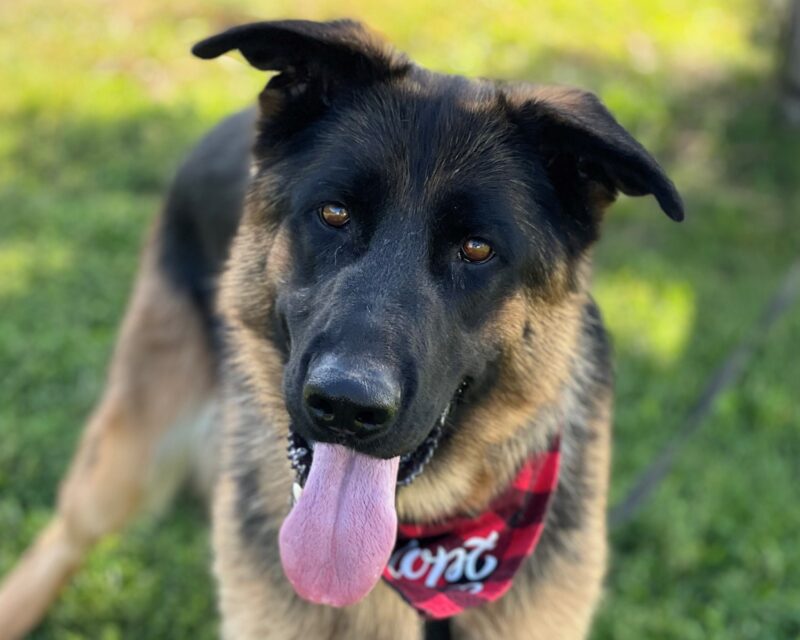
Learning is a lot easier when it’s fun, and the same goes for our four-legged friends too! No matter the age or breed, we’ve found that positive reinforcement is the most effective way to train your pet.
Something to remember is that dogs do not view humans as fellow dogs. Dogs communicate with humans much different than they do other dogs. Dogs communicate with each other on a much more scent-based platform, causing them to sniff each other’s pheromone areas (such as under or around the tail region). Dogs communicate with humans on a much more visual-touch platform. While dogs have a very strong attachment to their owners, they do not see us as another dog that just happens to walk on two feet.
Here at HSPPR, we recommend using positive reinforcement training. Here are some alternate training theories and why we encourage owners to use positive reinforcement.
Alpha Theory
The Alpha Theory in dog behavior is the concept that dogs form packs and there needs to be an “Alpha” to lead the pack. This theory is usually a support mindset for what is referred to as dominance training. Dominance training is the process of achieving control and dominance over a dog through forceful actions. Some common methods in dominance training are alpha rolls, hitting or spanking a dog, yanking the leash, and using aversive stimuli. However, dogs display aggressive behaviors because they are experiencing fear, stress, or anxiety; not to achieve dominance.
Instead, try…
Providing direction, consistency, and training. When our dogs understand our expectations clearly, we have a better relationship with them. Often, when we describe a dog as needing an alpha, what we’re really describing is a dog that has low or no self-control and does not understand what is expected in the relationship. Instead, our dogs need leaders. We can teach dogs self-control through positive reinforcement training and help them understand what is expected of them.
Positive Punishment
Positive punishment can be detrimental to the trust and relationship that exists between a dog and its owner. An example of this can be when someone spanks their dog to help teach them what is “bad.” Just like humans, dogs do not learn well when experiencing a high amount of stress and can respond with aggression.
Instead, try…
Providing direction and positive reinforcement. By doing this we teach our dogs what to do rather than “rubbing their nose in it.” Providing a consistent routine is important for our dogs to understand there will be opportunities to go outside. Reinforcing the positive outcome of eliminating outside with rewards helps them understand this is the behavior we are seeking. Spanking or hitting a dog teaches fear and does not tell a dog what they need to do to avoid punishment. If done often enough, dogs learn helplessness because they don’t know how to avoid being punished.
Positive Reinforcement
Positive reinforcement is the most effective way to train your dog. It is based on the idea of encouraging good behaviors with rewards. This means that your dog will be happier and more incentivized to practice their wanted behaviors and leave their unwanted behaviors behind. This type of training can also be useful for building a strong bond and deep trust between owner and dog, resulting in the close relationship that everyone strives to have with their pet.
Want to learn more about dog training tips and tricks?
Check out our Pet Care & Animal Behavior resources page to find info on crate training, socialization, housetraining and more!







